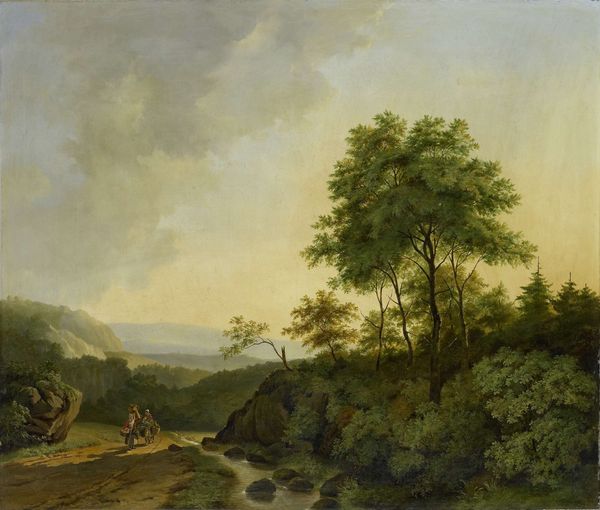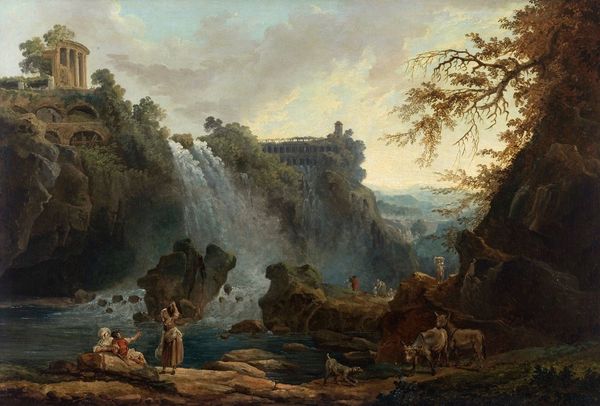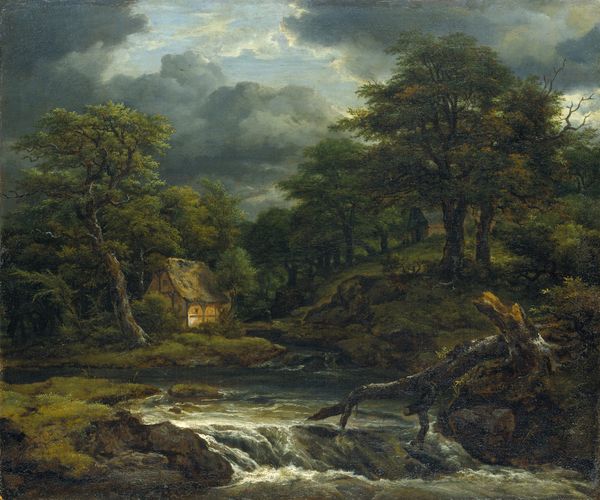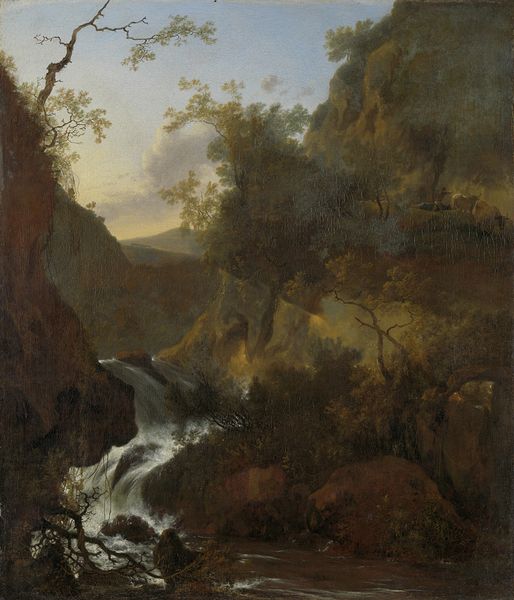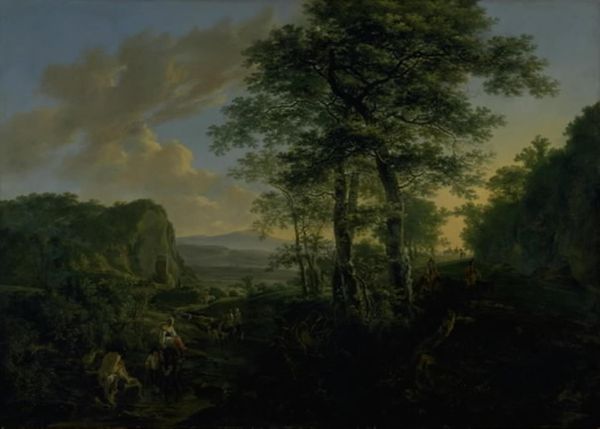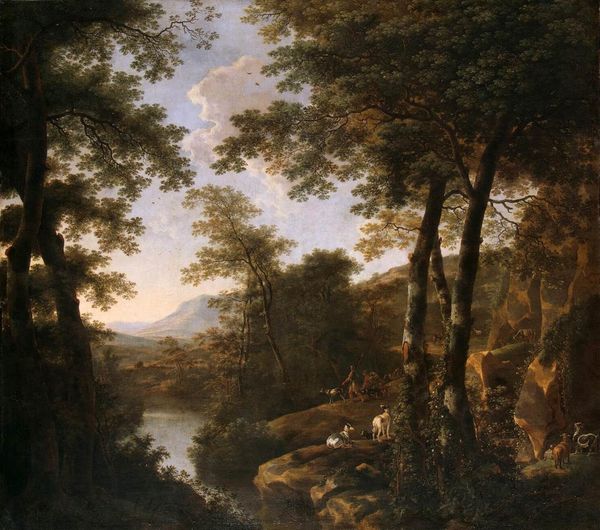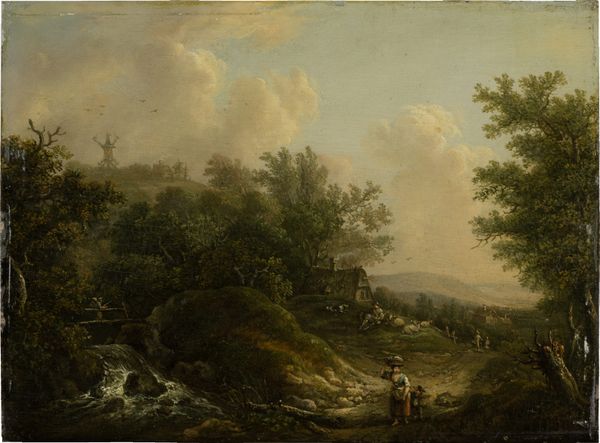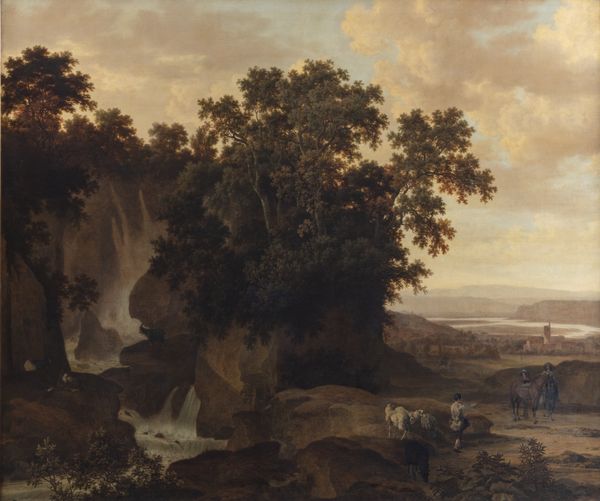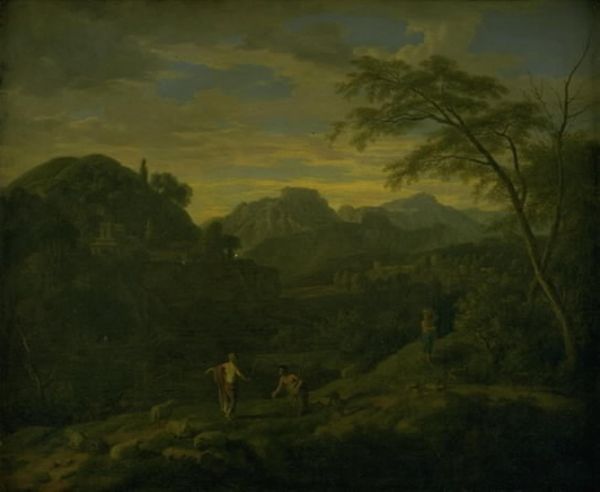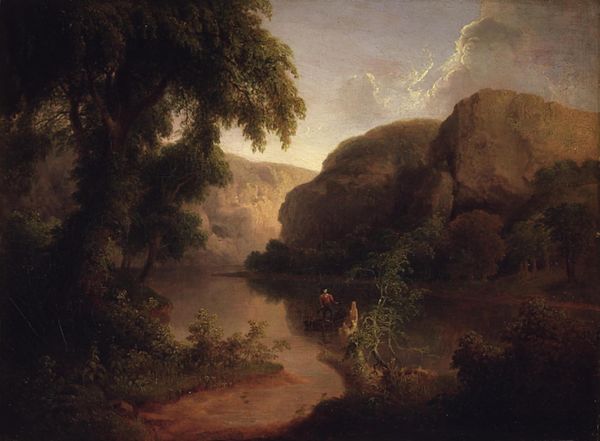
painting, oil-paint
#
baroque
#
painting
#
oil-paint
#
landscape
#
waterfall
#
oil painting
#
realism
Dimensions: height 123 cm, width 151 cm, depth 8 cm
Copyright: Rijks Museum: Open Domain
Curator: So, what do you think of it? Does it evoke a certain feeling in you? Editor: Oh, instantly! A sense of hushed reverence, almost a theatrical staging. It’s as if the landscape itself is putting on a play. The light, those dramatic cliffs... It whispers stories, you know? Makes you want to pause and listen. Curator: Precisely. What we're looking at is "Mountainous landscape with waterfall," an oil on canvas created between 1650 and 1692, attributed to Roelant Roghman. And it currently resides in the Rijksmuseum. What's fascinating is the tension between the realistic depiction of the landscape and the theatrical atmosphere you mentioned. Roghman was operating within the Baroque style, known for its drama, but simultaneously reflecting the Dutch penchant for realism. Editor: Baroque, that fits! But realism with a touch of the fantastical, perhaps? Because the way the waterfall is painted almost seems too perfect, too deliberately placed, to be entirely, well, real. More like nature improved by art, if you get my drift. Curator: A manipulation of nature, absolutely. It raises interesting questions about power, the artist's gaze, and even the colonisation of the landscape through art. These landscapes often depicted places many patrons never actually saw, so their ideas of geography, nature, and culture were being subtly molded by these depictions. Consider who *isn't* represented here: those who might have lived on this land, their stories, their labour erased for the pleasure of the gaze. Editor: Wow, I hadn't considered that erasure... the unspoken narrative. Now that you point it out, it casts a different light on those figures riding through. Who are they? Conquerors? Tourists? Just passing through? It adds another layer of unease to that initially pretty picture. Like, what story is being framed in that pretty light? Curator: Exactly! By exploring these dynamics, we engage in a crucial dialogue between art history and contemporary social theory, understanding how these works intersect with themes of power, representation, and historical narratives. Editor: You know, stepping back, it hits me that the painting itself feels like a carefully crafted argument, a visual essay about nature, art, and…control, perhaps? I love how art keeps us asking these impossible, important questions! Curator: And, through careful contextualization and exploration, it hopefully spurs action as well, in how we see the art world and our engagement in social issues surrounding representation in these spaces.
Comments
No comments
Be the first to comment and join the conversation on the ultimate creative platform.

